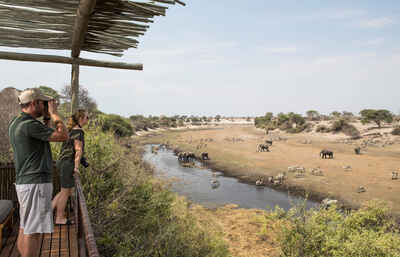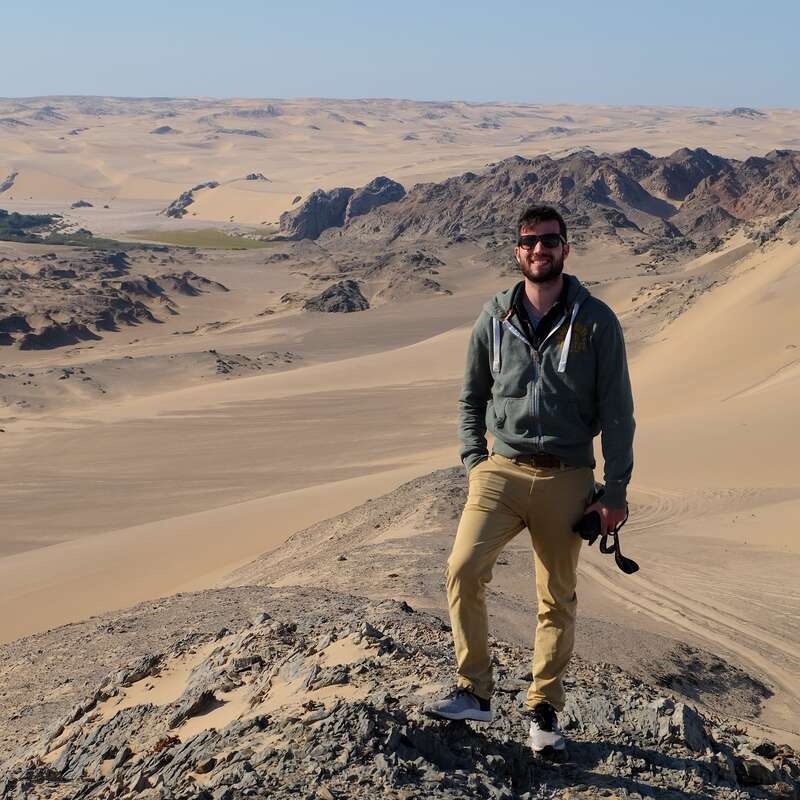About Leroo La Tau
Leroo La Tau is situated 140km south-east of Maun, on the western boundary of Botswana’s Makgadikgadi Pans ...
... National Park. The lodge’s 12 rooms and a game-viewing hide are perched along a cliff, 10m above the Boteti River, which – having been dry for two decades – began flowing again in 2008.
Leroo La Tau is currently the most upmarket accommodation option from which to explore the western section of Makgadikgadi Pans National Park. It’s a good lodge with a lovely outlook and friendly service. The best time to visit is has always been between July and October, when wildlife concentrations have been at their peak. For the rest of the year there isn’t any particular experience that would put it high on our list of Botswana’s top destinations.
Our view
Leroo La Tau is currently the most upmarket accommodation option from which to explore the western section of Makgadikgadi Pans National Park. It’s a good lodge with a lovely outlook and friendly service. The best time to visit is has always been between July and October, when wildlife concentrations have been at their peak. For the rest of the year there isn’t any particular experience that would put it high on our list of Botswana’s top destinations.
Accommodation
12 thatched rooms
Children
Best for 12+
Open
All year
Activities

4WD Safari

Birdwatching

Boat trip

Cultural excursion

Guided walking safari

Private activities
Traveller reviews of Leroo La Tau
2 real, un-edited reviews from Expert Africa's travellers.
Arrived 18 Nov 2016, 2 nights
"Leroo La Tau review"
Overall rating: Excellent
Arrived 3 Oct 2008, 3 nights
"Great new lodge"
Overall rating: Excellent
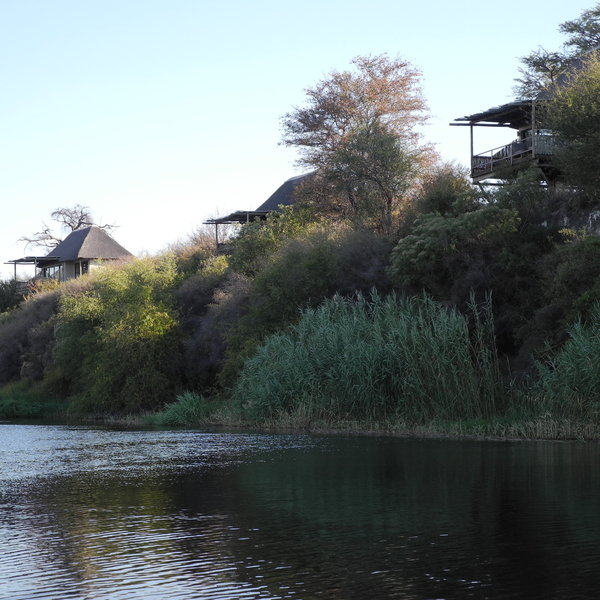
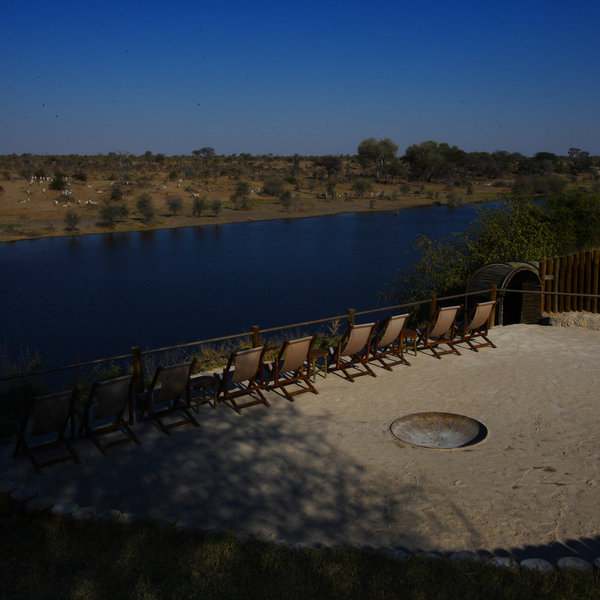
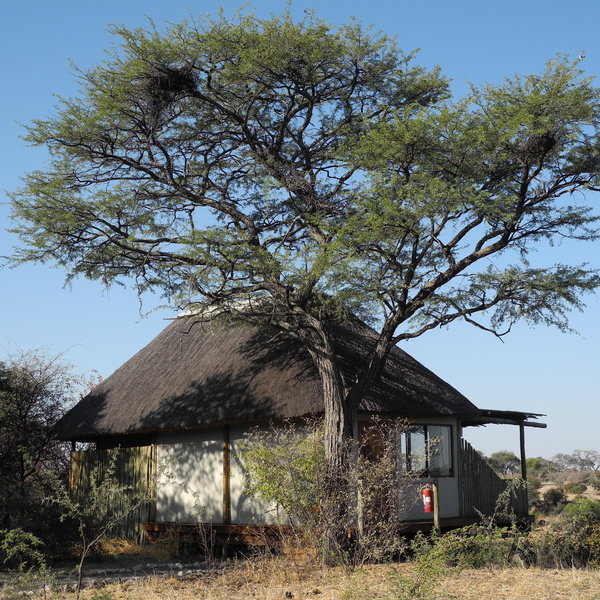
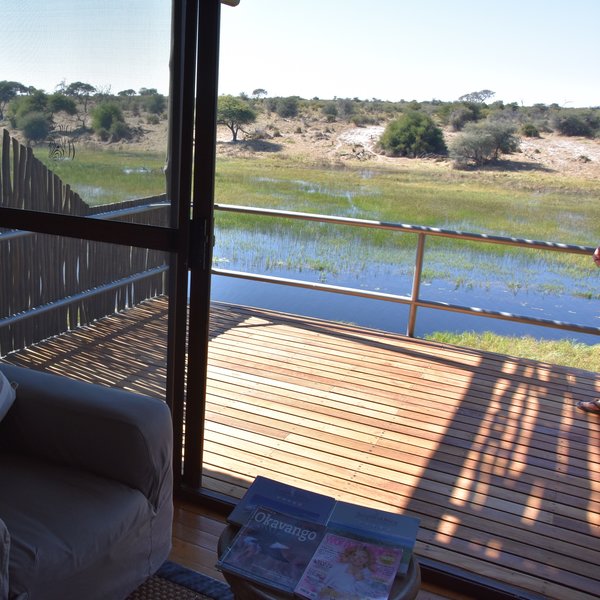
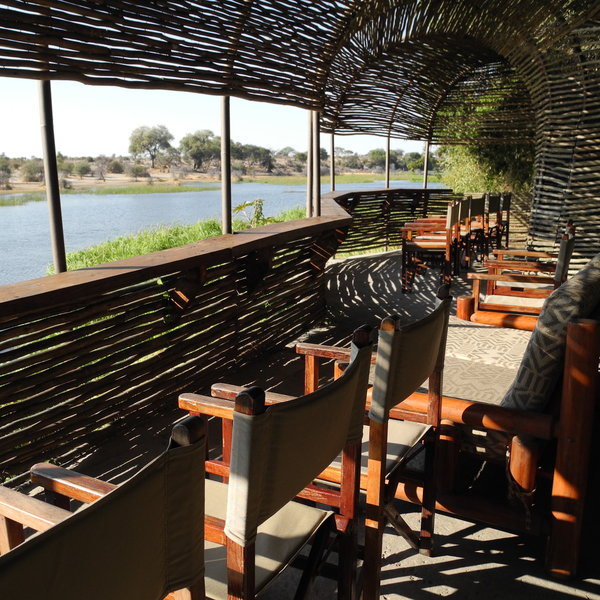
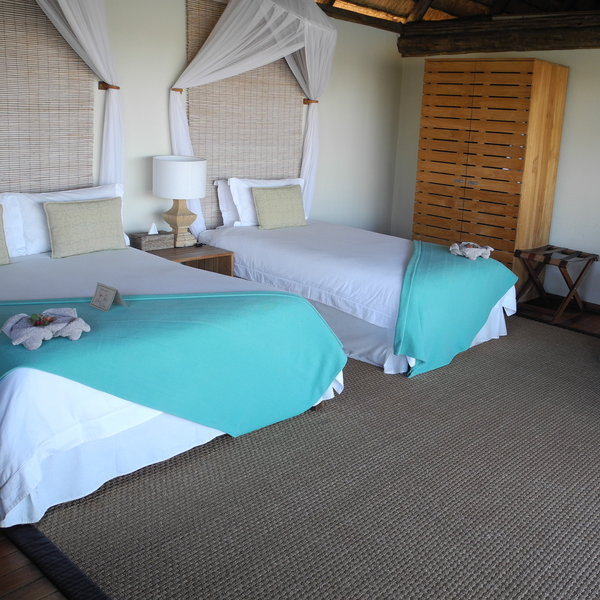
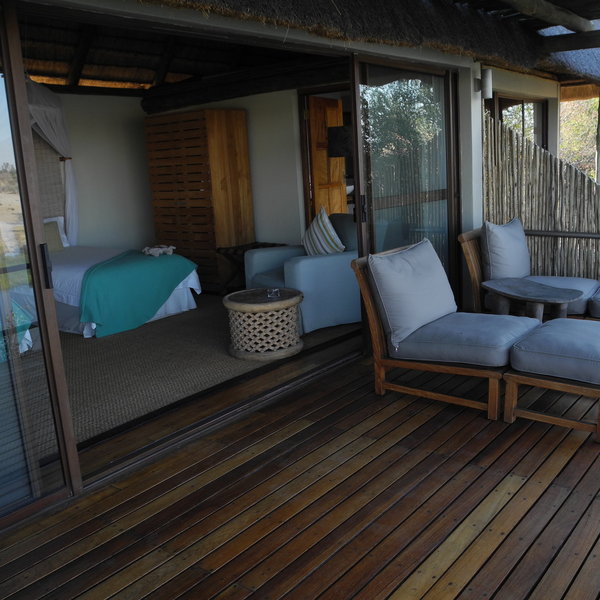
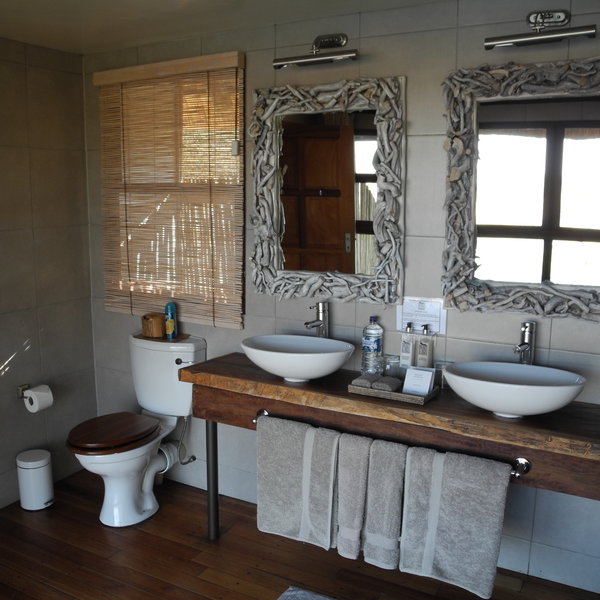
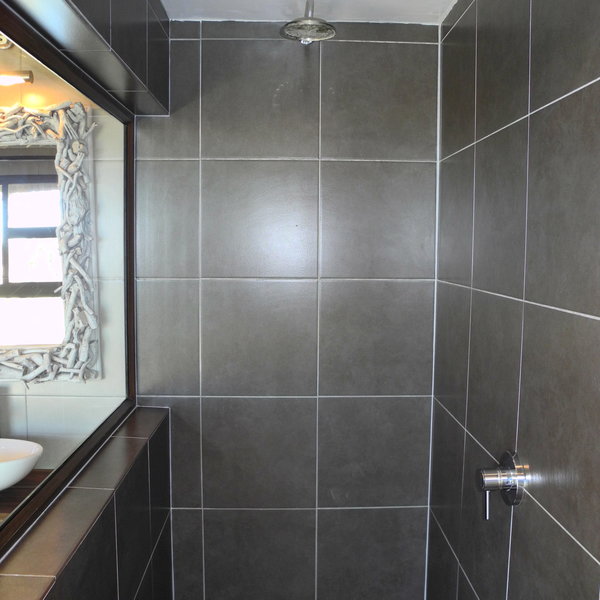
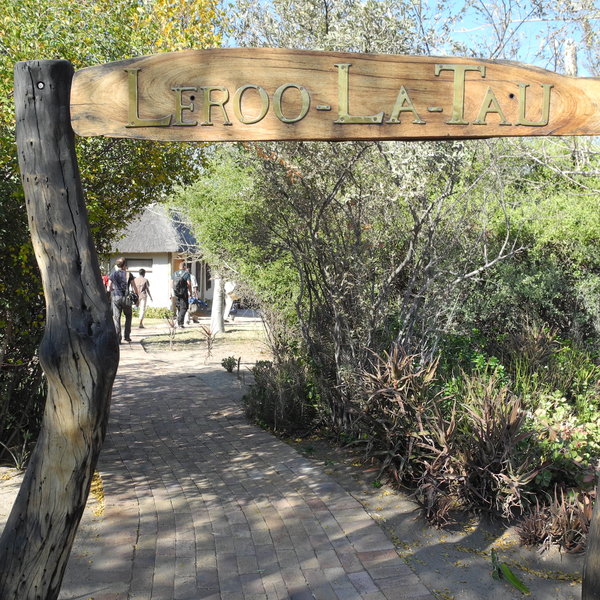

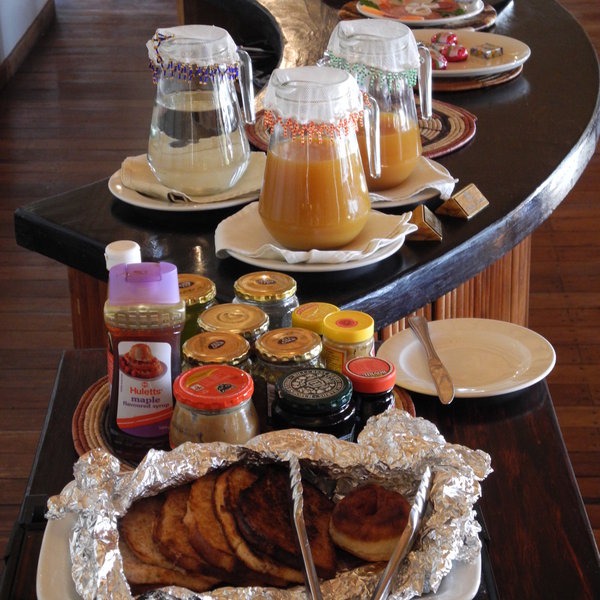
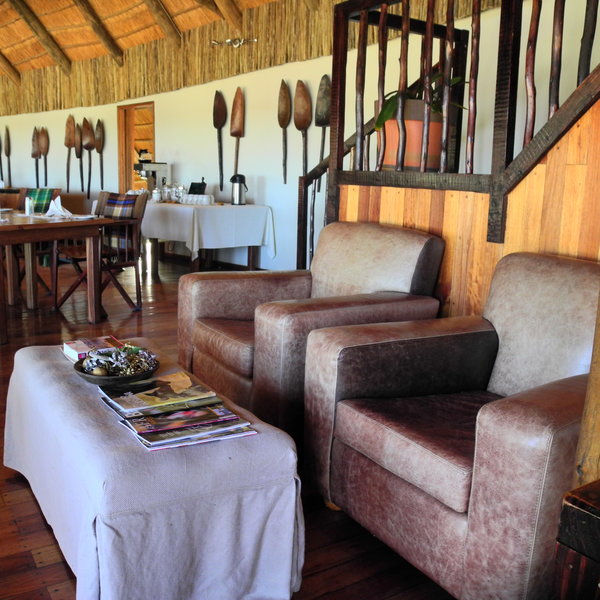
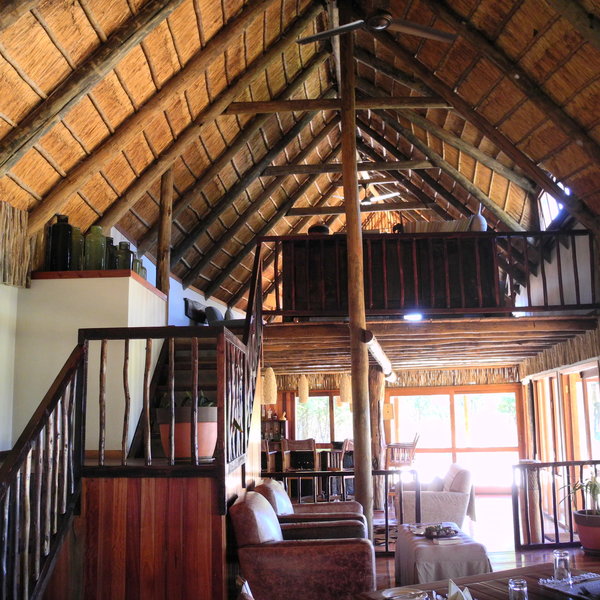
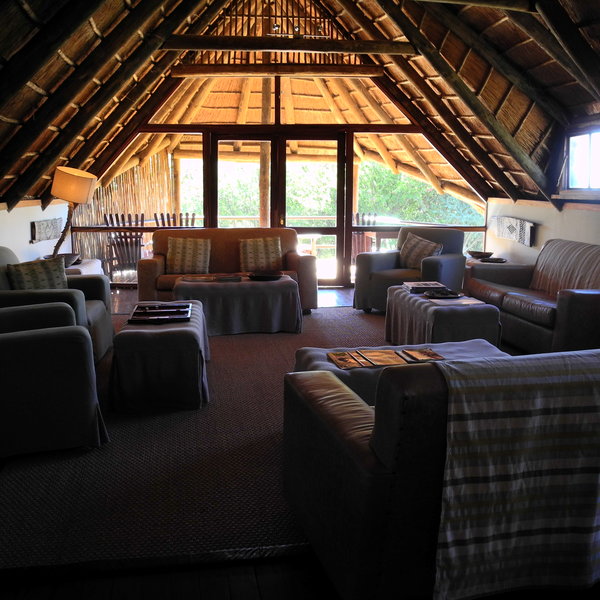
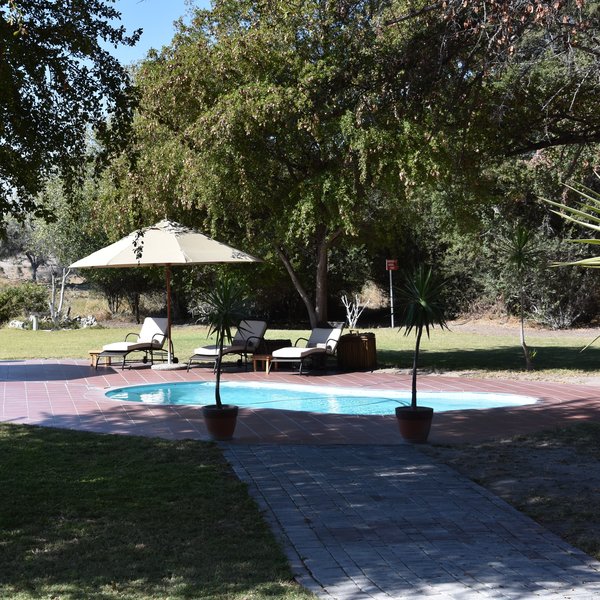
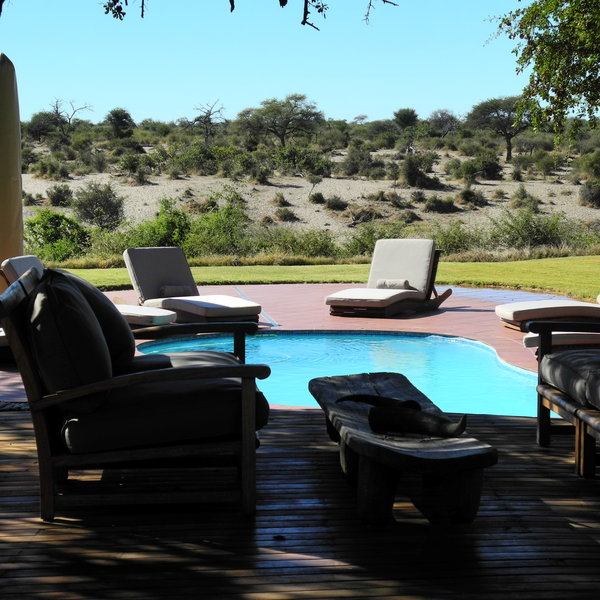
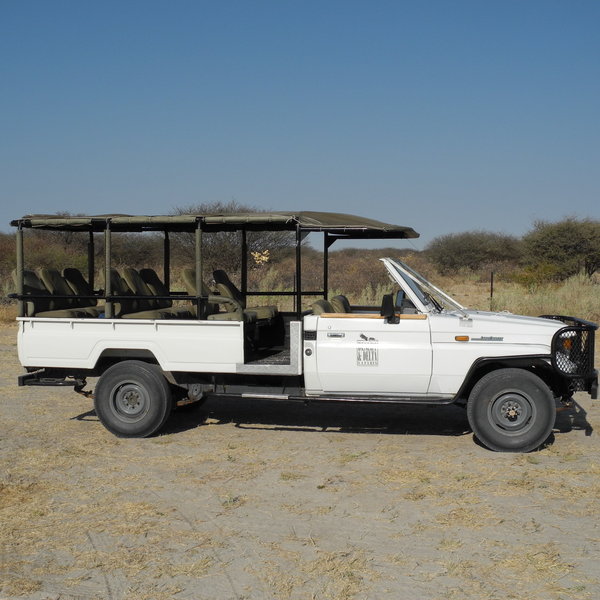
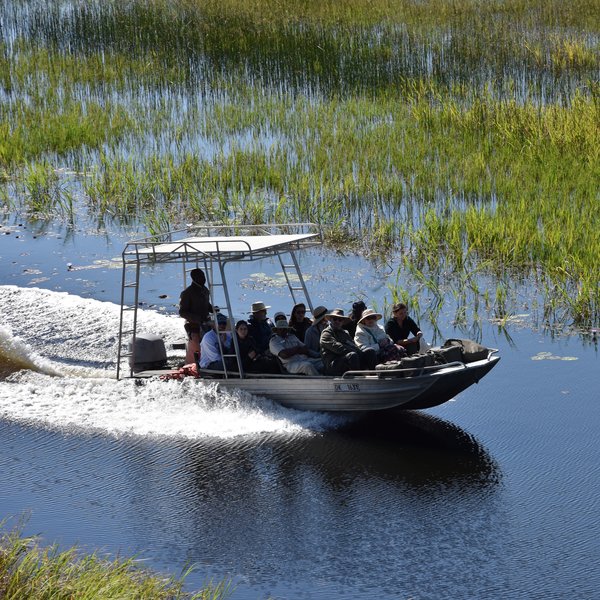
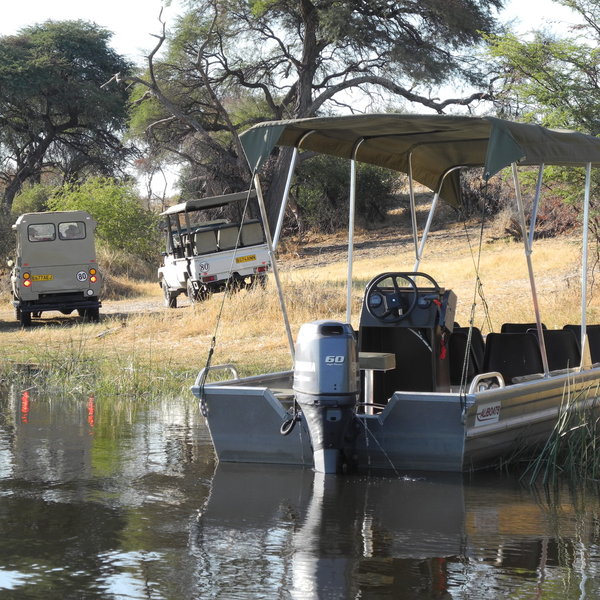
Expert Africa's gallery
When we travel we take lots of photos ourselves to give you a real and un-edited view of the safaris. See our 45 pictures and 1 videos of Leroo La Tau to get the candid view.
View galleryLeroo La Tau: Our full report
Leroo La Tau is situated 140km south-east of Maun, on the western boundary of Botswana’s Makgadikgadi Pans ...
... National Park. The lodge’s 12 rooms and a game-viewing hide are perched along a cliff, 10m above the Boteti River, which – having been dry for two decades – began flowing again in 2008.
From this vantage point, wildlife can be seen coming to drink on the opposite riverbank, which stretches away into the park’s interior. Game concentrations are at their highest towards the end of the dry season (between July and October) when the Boteti provides a vital water source for migrating herds of zebra and wildebeest. During the rainy season (December-April), however, the game viewing at Leroo La Tau has historically always been sparse.
Indeed, with the Boteti River now flowing, the renowned predator and prey interaction at the once few waterholes along the dry riverbed is no longer a feature, and in general the game viewing in this area is not as concentrated as it used to be.
Accommodation at Leroo La Tau consists of 12 large chalets, well spaced along a 1.5km stretch of riverfront, with elevated views across to the national park. The chalets are of solid construction with thatched roofs and glass frontage to emphasise the outlook. Raised on individual wooden platforms, they’re reached along short spurs from the main pathway which lead to wooden steps and an ornately carved side entrance door. Each chalet has wood flooring throughout and an extended wooden veranda accessed by glass sliding doors. The lodge's east-facing direction makes this a great place to watch the sun rise over the Makgadikgadi Pans National Park.
Inside each chalet is a spacious bedroom with both a double and a three-quarter-sized bed, a seating area, a desk and a wardrobe with plenty of shelving and hanging space. The use of sisal matting, calico curtains and a pale colour scheme gives a neutral, airy feel. A wooden door from the bedroom leads to an en-suite bathroom with a flush toilet, his and hers washbasins and a large shower – all with riverfront views.
Furnishings and amenities include mosquito nets, ceiling fan, bedside tables and lamps, safe, tea and coffee station, drinking water, a 220 volt plug point (which only works when the generator is on, although there’s 24-hour lighting), torch, insect repellent and spray, magazines, umbrella, laundry basket, bathrobes and toiletries such as conditioning shampoo, soap, shower gel, body lotion and a shower cap. Hairdryers are available from reception on request.
The central thatched main area at Leroo La Tau has one side largely made of wood and glass, overlooking a neatly clipped lawn (with a swimming pool surrounded by sunloungers) which leads down to a sandy firepit and then lower still to the hide overlooking the Boteti River. The main building itself houses a dining room dominated by a long wooden table, with a bar at one end and curio shop at the other. Above the bar is a smaller, loft-style room with comfy lounge and views over the river.
Activities at Leroo La Tau centre mainly around game drives in open 4WD safari vehicles, but also include boat trips along the Boteti River (water levels permitting) and an optional Khumaga Village tour. We found that the guides were very friendly, knowledgeable and eager to search out wildlife sightings. It’s worth noting that the Makgadikgadi Pans themselves are not visited on daily scheduled activities from Leroo La Tau as they are too far away.
During the day, game drives are generally conducted within Makgadikgadi Pans National Park, where the emphasis is on combing the Boteti riverfront for game. Guests are first transferred across the river by boat to where the vehicles are parked. Within the national park the guides must abide by the park rules of no off-roading, no walking and no night drives. At night, drives are conducted in Leroo La Tau’s own private concession – a relatively narrow neck of land surrounding the lodge.
Towards the end of the dry season, when game concentrations are greatest, time spent in the hide at the lodge can be a highlight in itself. The lodge also offers full-day trips to Nxai Pan and the famous Baines' Baobabs for guests staying three or more nights. If this appeals to you, please speak to us as we'll need to request it in advance – and be aware that it involves a lengthy drive each way.
On our last visit to Leroo La Tau in June 2017 we only visited for a couple of hours. We had previously spent a night camping and exploring the park adjacent and during the game drives we saw hippo, kudu, giraffe, ostrich and black-backed jackal. Perhaps most notable was the large number of white-backed vultures we spotted along the riverside. The majority of the wildlife sightings were along the riverfront, hence this section was often busy with other vehicles. We did hear lion roaring during the night but weren’t lucky enough to spot them the next day. Elephant are seen here, though mainly the bulls as few matriarchal breeding herds roam the arid Kalahari. In conversation with the lodge guides we were advised that leopard are rarely seen and other big predators such as cheetah and spotted hyena hardly ever.
Activities
4WD Safari
Birdwatching
Boat trip
Cultural excursion
Guided walking safari
Private activities
Families & children
- Attitude towards children
- Children aged six and over are welcome at Leroo La Tau.
Families with children aged 6–11 will be required to book private activities at an additional cost, the nature of which may be subject to the discretion of the managers or guides. - Equipment
- There is no special equipment provided for children.
- Generally recommended for children
- Leroo La Tau does not have a family room and there are restrictions on activities for children aged 6–11 so we’d recommend it only for children aged 12 and over.
- Notes
- With the possibility of potentially dangerous wildlife passing through the camp, and no fencing around the pool area, children must be under the constant supervision of their parents.
Food & drink
- Usual board basis
- Full Board & Activities
- Food quality
- We’ve found the meals at Leroo La Tau to be very good overall and nicely presented.
Our last visit was brief so we did not eat in camp. However, on a previous stay we began the morning with a light continental breakfast of cereal, yoghurt, fruit, toast, tea and coffee before setting off on the morning activity.
We returned to a buffet brunch, which was a selection of continental breakfast options and hot savoury dishes as well as bacon and eggs cooked to order.
For afternoon tea we had tasty cheese pastries and sponge cake, with tea, coffee, iced tea or home-made lemonade.
Nibbles of onion rings and toasted nuts were a nice touch before dinner. For dinner the plated starter was a delicious pear and onion filo parcel with orange chutney. The main was a buffet of lamb, crumbed bream (fish), mashed potatoes, brown rice, cauliflower cheese, snow peas and green salad. The plated dessert was fruit crumble with home-made banana ice cream and a cheese board was available on the buffet. - Dining style
- Group Meals
- Dining locations
- Indoor and Outdoor Dining
- Drinks included
- Bottled water, soft drinks, local beers and spirits and a limited selection of (usually) South African red and white wines are included. Champagne and imported wines and spirits will cost extra.
Getting there
- Location
- Kalahari's Salt Pans, Botswana
- Ideal length of stay
- We recommend a stay of 2–3 nights, particularly during the dry season (around July–October) when game densities are higher.
- Directions
- Leroo La Tau is a two-hour drive or a 30-minute light aircraft flight from Maun. The road transfer from Khumaga airstrip to the lodge takes about 20 minutes.
- Accessible by
- Self-drive or Fly-and-Transfer
Communications
- Power supply notes
- The generator is on at set times during the day, usually around 5.00am–3.00pm and 6.00–11.00pm. Inverter and batteries provide limited power (i.e. for lights) outside these times.
- Communications
- There is no internet or landline at Leroo La Tau, and only intermittent cellphone reception. There is cellphone and satellite phone contact with Maun in the case of an emergency.
- TV & radio
- None
Health & safety
- Malarial protection recommended
- Yes
- Medical care
- A comprehensive first-aid kit is kept in camp and both managers and guides are first-aid trained. Medical advice can be sought from the company medical officer in Maun and, in an emergency, medical evacuation to Maun can be arranged. Please note that it is only possible to fly out of camp during daylight hours as the bush airstrips do not have any lighting at night.
- Dangerous animals
- High Risk
- Security measures
- Though there is an electric fence around the lodge to deter elephant, potentially dangerous wildlife can still roam through so guests are escorted to their chalets after dark. Alarms are provided in the rooms for use in case of an emergency.
- Fire safety
- There are fire extinguishers in the common areas and outside each chalet.
Useful info
- Disabled access
- On Request
- Laundry facilities
- A full laundry service is included.
- Money
- There is a key-operated safe in each room. The lodge does not offer currency-exchange facilities.
- Accepted payment on location
- MasterCard and Visa credit cards are accepted; Diners and Amex are not. Cash payments may be made in the form of South African rand, GB sterling, US dollars, euros and Botswana pula.
Plan and book your trip with Expert Africa
All of our trips are tailor-made, so we'll always adapt them to suit you. Talk to an Expert and let us plan and arrange your perfect trip.

Talk to an Expert
Call or email us now! We’ll match you with the Specialist in our team who is best suited to help you. Then together we can start planning your trip.

Set up your itinerary
Based on our experience and your ideas, your specialist will create a detailed, costed itinerary. We’ll refine it together, until we have a trip that you’re perfectly happy with.

Prepare for your trip
The same Specialist will make the seamless arrangements for your trip, send you detailed travel documents, and be available to answer any questions before you depart.

Travel with peace of mind
After you set off, you’ll be cared for by our partners in Africa, most of whom have worked with Expert Africa for decades. And if you ever need us urgently, we’re available 24/7.

When you return
We love to learn about your trip, and so will always be grateful if you’ve the time to give feedback to your Specialist when you return.
Leroo La Tau's location
Look closer at the environment and surroundings of Leroo La Tau.
Excursions from Leroo La Tau
Optional extra day-trips and excursions possible whilst you're staying at Leroo La Tau. Talk to us: these are usually best arranged before you go.
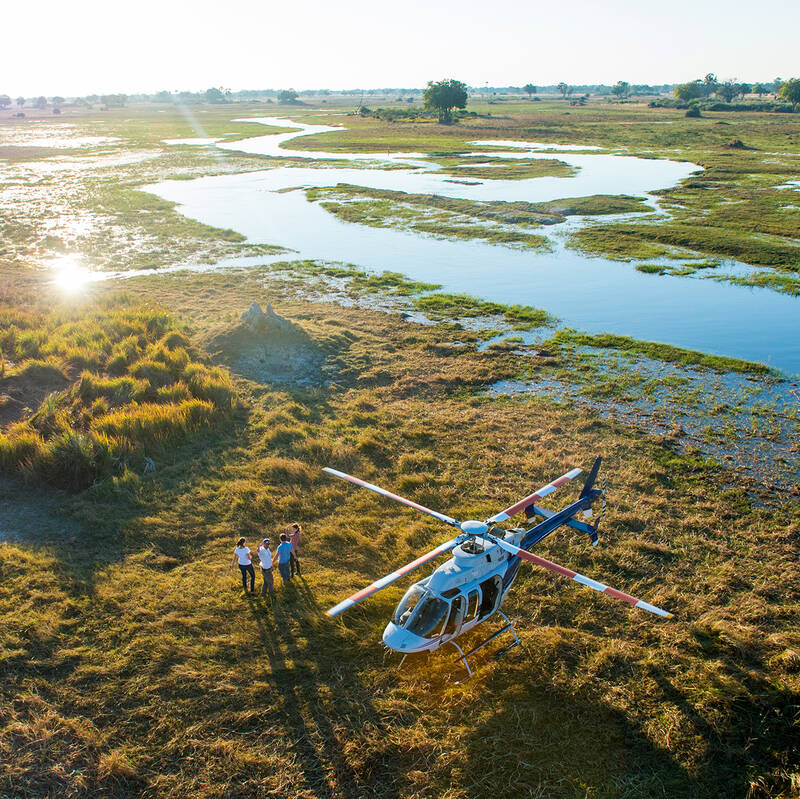
Helicopter Flight - Botswana
Various: from 30 minutes to half a day.
Low-flying, agile and offering superb views, helicopters are an ideal way to move around the Okavango Delta.You can use them instead of fixed-wing inter-lodge transfers or as an addition to other wildlife watching activities, and of course, helicopters can hover to allow that perfect pic, whereas fixed-wings can’t.
More about Helicopter FlightOther lodges in Kalahari's Salt Pans
Alternative places to stay in this same area.
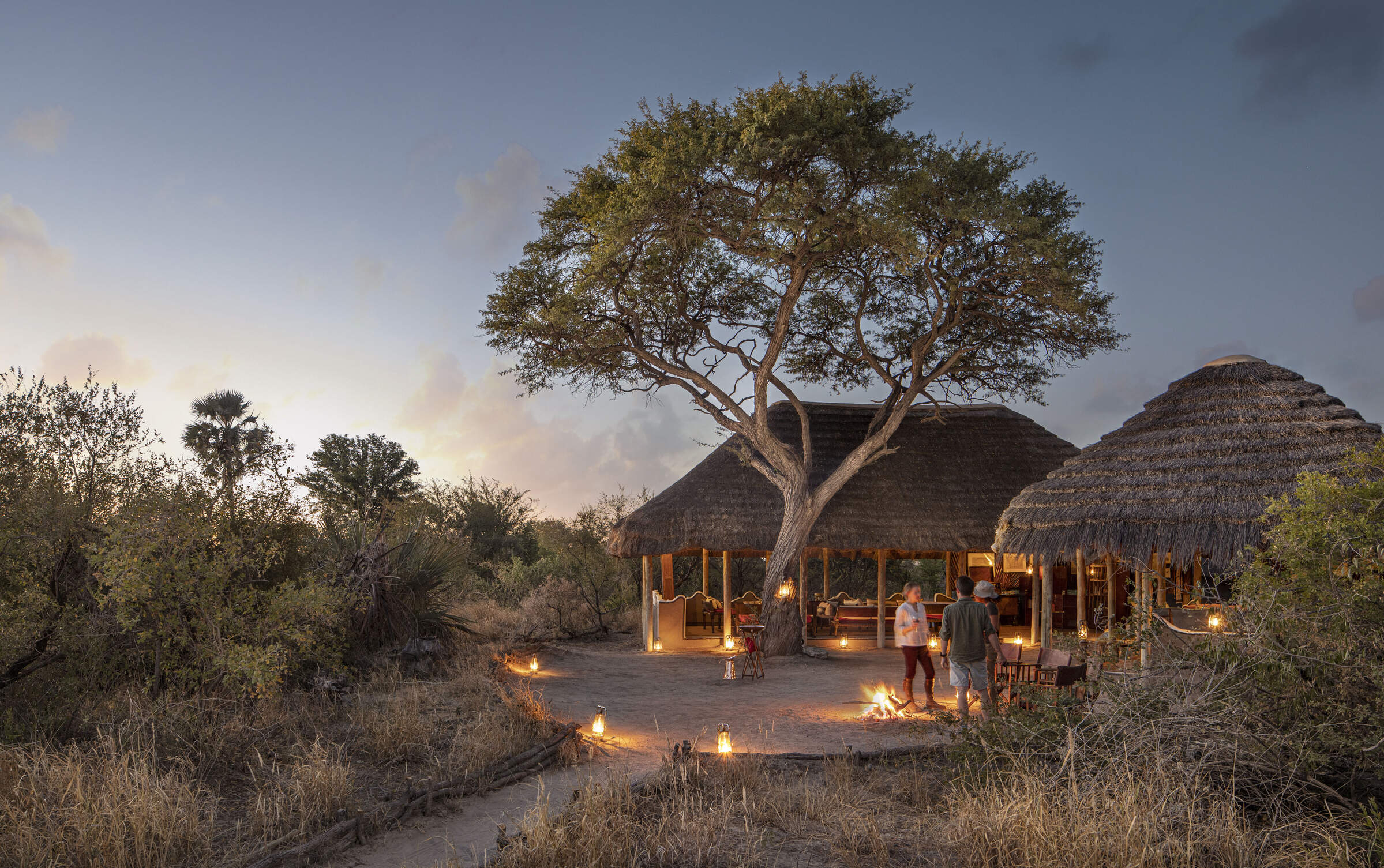
Camp Kalahari
Overlooking the Makgadikgadi Pans, Camp Kalahari is great value; come for quadbiking excursions on the salt pans, cute meerkats, excellent Bushman walks, and interesting 4WD safaris.
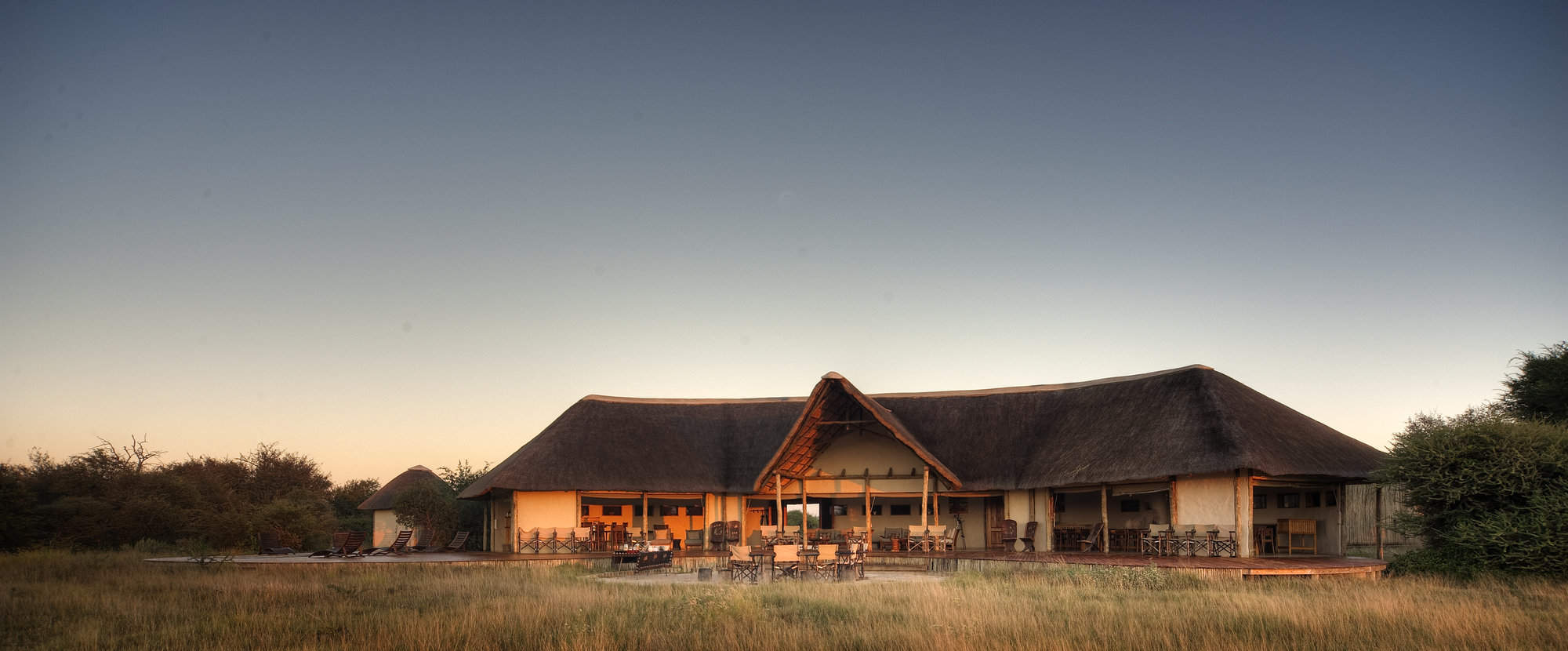
Nxai Pan Camp
Offering good summer game viewing and visits to Baines Baobabs, the comfortable Nxai Pan Camp is currently the only permanent camp in Nxai Pan National Park.
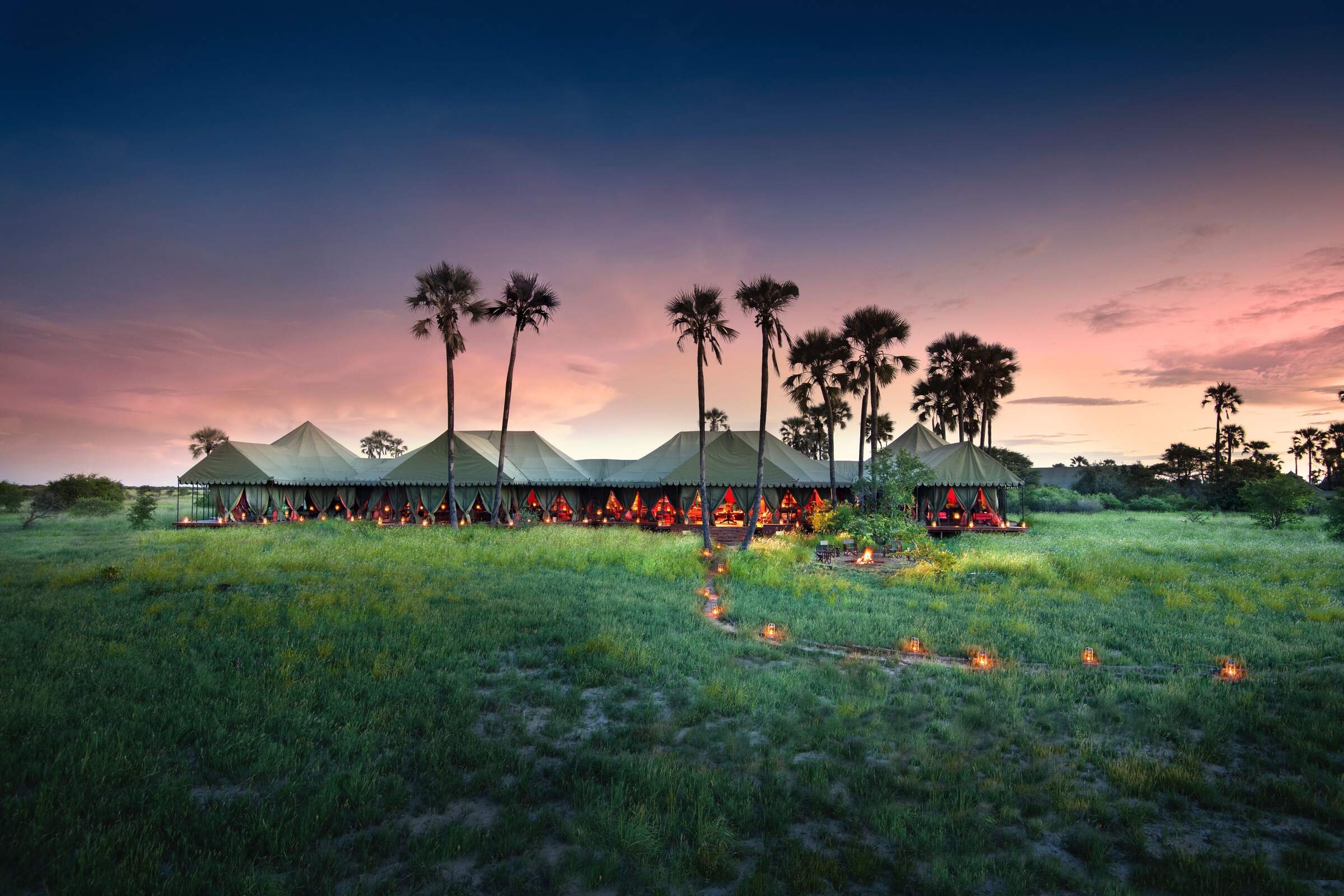
Jack's Camp
Jack's Camp was the original camp in the Makgadikgadi area, and many still consider it the best. Come for a unique and memorable experience, but not for prolific game viewing.
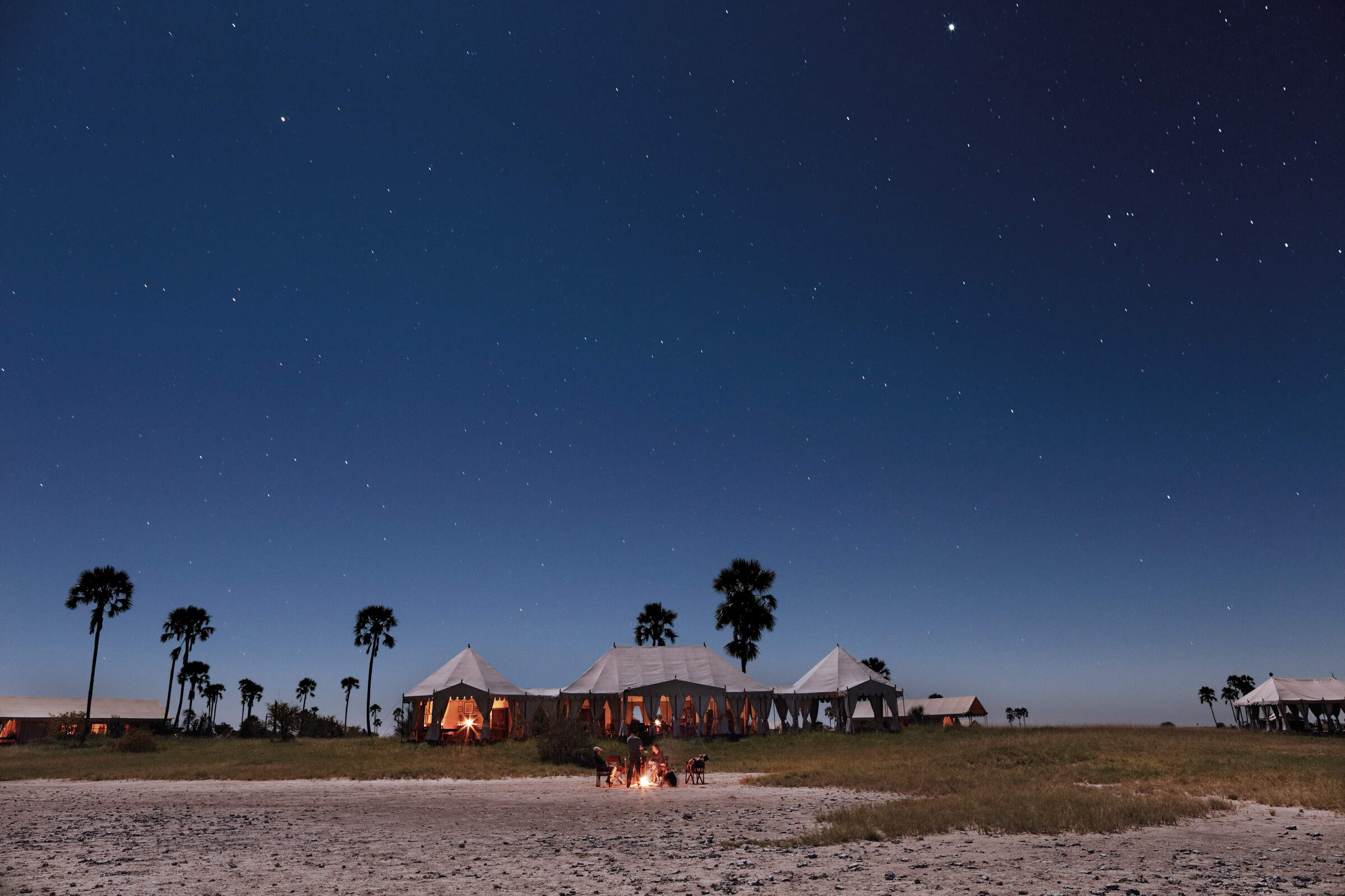
San Camp
The simple but stylish San Camp lies in a stunning location beside the Makgadikgadi Salt Pans, where highlights are quadbiking, meerkats, and Bushmen walks.
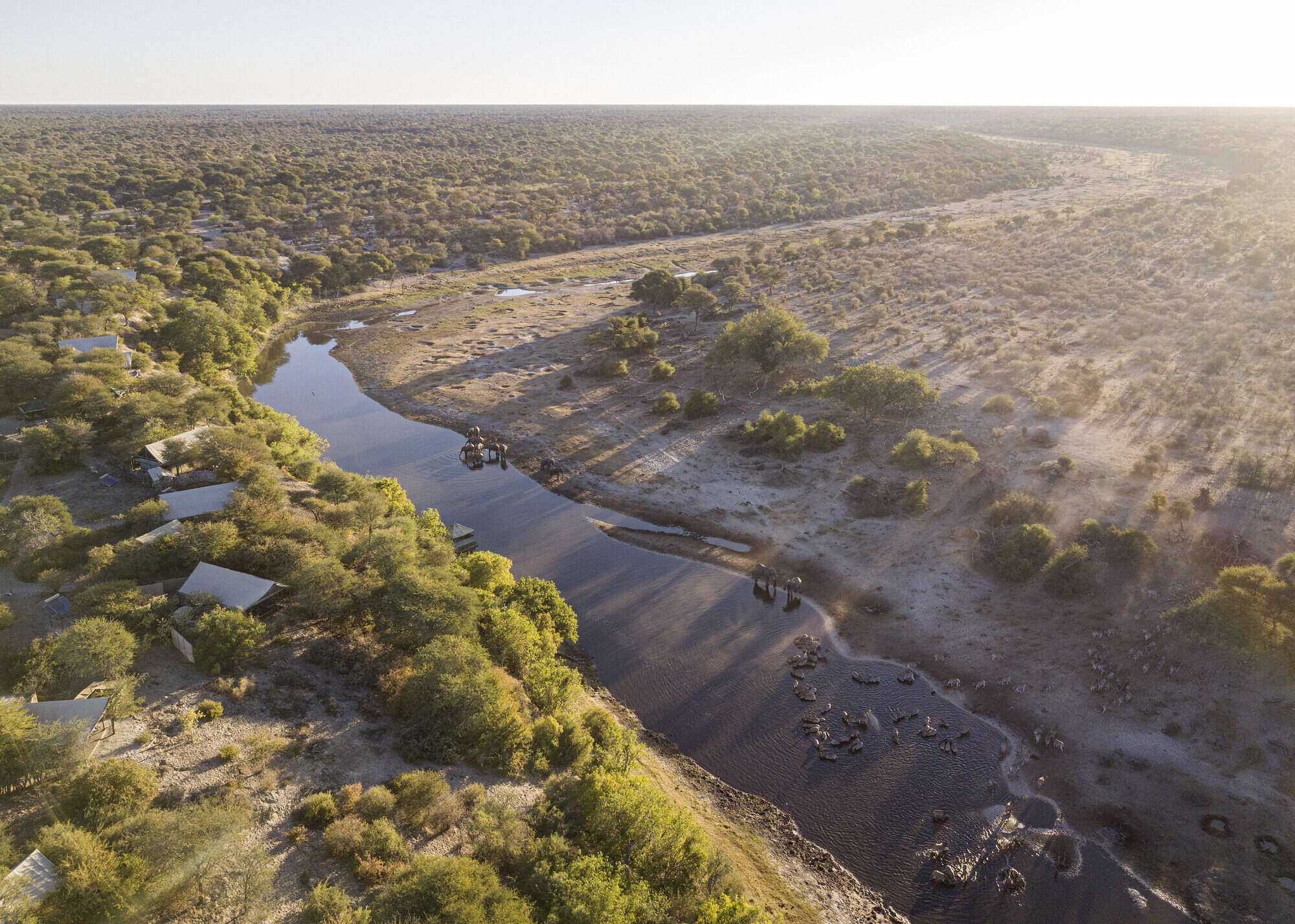
Meno A Kwena
Meno A Kwena Tented Camp is an old-style safari camp, run by an experienced Botswana expert. Overlooking the bed of the Boteti River, it's a great place to relax and watch wildlife at the camp's waterhole.
When to go to Kalahari's Salt Pans
Our month by month guide: What it's like to visit Leroo La Tau in Kalahari's Salt Pans
Jan
Feb
Mar
Apr
May
Jun
Jul
Aug
Sep
Oct
Nov
Dec
Kalahari's Salt Pans in January
January is the peak of the rainy season, bringing short but intense downpours that flood the pans, transforming the landscape into a lush paradise. The Makgadikgadi and Nxai pans become vast grasslands, attracting large herds of zebra and wildebeest as part of their annual migration. The Boteti River swells, supporting a diversity of wildlife.
Birdwatching is exceptional, with migratory birds and flamingos breeding in Sua Pan. While game viewing can be challenging due to dispersed wildlife, patient observers can spot predators like lions and cheetahs taking advantage of newborn prey.
Low-season rates make this an attractive time for budget-conscious travellers.
- Salt pans flood, creating a dramatic transformation
- Zebra migration draws predators
- Flamingo breeding season in Sua Pan
- Exceptional birdwatching and photography opportunities
- Low visitor numbers, offering an exclusive experience
Our view
A good time to visit, with pros & cons
Weather in January
Kalahari's Salt Pans in February
February remains lush and vibrant, with the zebra migration in full swing across the pans. Nxai Pan National Park is particularly rewarding, as grasslands attract large herbivore herds and their predators. The famous Baines’ Baobabs stand starkly against the green backdrop, making for breathtaking photography.
With water sources abundant, birdwatching is at its peak, and flamingos continue to thrive in Sua Pan. The Boteti River remains active, drawing thirsty wildlife. However, thick vegetation can make spotting large animals more challenging.
Camps and lodges offer excellent availability and value during this period.
- Peak of the rainy season, pans fully flooded
- Zebra migration at its most dramatic
- Flamingos still abundant in Sua Pan
- Green season rates offer excellent value
- Lush landscapes provide an ideal setting for photography
Our view
A good time to visit, with pros & cons
Weather in February
Kalahari's Salt Pans in March
March is a transitional month: the main rains beginning to taper off but the Makgadikgadi and Nxai Pan landscapes remain lush and teeming with life. The zebra migration starts moving northward from Makgadikgadi and Nxai, but large herds are still present, making this a great time for game viewing.
If it’s accessible, this is a lovely time to visit Kubu Island, as the contrast between the granite outcrops and the surrounding greenery can be striking. Predators remain highly active, particularly around Nxai Pan and Kukome Island, where they hunt the last of the young antelope. Birdwatching is still rewarding, and as water begins to recede, quad biking opportunities start opening up in drier areas.
- Rains begin to taper off, but pans remain lush
- Final opportunity to witness the zebra migration
- Flamingos start to disperse from Sua Pan
- Good predator-prey interactions
- Shoulder season begins, with fewer tourists
Our view
A good time to visit, with pros & cons
Weather in March
Kalahari's Salt Pans in April
While occasional late rains may occur, April marks the end of the rainy season, with floodwaters receding and the landscape drying out. The Makgadikgadi Pans begin transitioning back to their iconic white salt flats as the water evaporates, creating striking contrasts for photography. This creates a unique landscape where wildlife is easier to spot against the increasingly barren backdrop.
Wildlife concentrates around the remaining waterholes in Nxai Pan, while the Boteti River can becomes a valuable lifeline for thirsty animals. Walks with San Bushmen and quad biking adventures on the salt pans become more accessible.
Night-time temperatures begin to drop, especially in the Central Kalahari area, making for comfortable evening game drives to spot nocturnal animals.
- Floodwaters recede, exposing salt flats
- Wildlife concentrates around remaining water
- Clear skies and mild temperatures perfect for game drives
- Baines’ Baobabs surrounded by seasonal water, ideal for photography
- Last month for good green season game viewing
Our view
A good time to visit, with pros & cons
Weather in April
Kalahari's Salt Pans in May
May is a popular month to visit the Kalahari Salt Pans region. The landscape has transformed, with the vast white expanses of Makgadikgadi Pans becoming more prominent. This creates surreal, otherworldly vistas perfect for photography. Wildlife concentrates around permanent water sources like the Boteti River, offering excellent game viewing opportunities. In Nxai Pan National Park, the famous Baines Baobabs stand out starkly against the drying landscape.
This is an ideal time for quad biking adventures across the salt pans. Cooler temperatures, especially in the mornings and evenings, lead to increased predator activity, and meerkat interactions are particularly rewarding, as they are active in the open plains. The skies remain crystal-clear, making for spectacular stargazing and astrophotography.
- Salt flats dry out, creating surreal landscapes
- Wildlife gathers at permanent water sources
- Perfect temperatures for safaris
- Quad biking becomes widely available
- Meerkat encounters highly rewarding
Our view
A very good time to visit
Weather in May
Kalahari's Salt Pans in June
June marks the official start of the dry season in the Kalahari Salt Pans region, bringing crisp, cool mornings and clear skies. The Makgadikgadi and Nxai pans are now vast, shimmering white expanses, offering incredible photographic opportunities. Wildlife viewing is excellent as animals congregate around the Boteti River.
Night-time temperatures can reach freezing, but daytime temperatures are pleasant. The clear, crisp air enhances visibility, making this a favourite time for serious photographers and one of the best months for stargazing. The atmosphere in June is at its clearest, allowing for spectacular views of the Milky Way. Meerkat encounters continue to be a highlight, with the animals more active in the cooler weather. The salt pans are now bone-dry, opening up thrilling quad biking excursions.
- Cold mornings, comfortable days for safaris
- Wildlife highly visible along the river and scarce waterholes
- Best time for quad biking across the salt pans
- Exceptional stargazing with crystal-clear skies
- Meerkats remain highly active and visible
Our view
Fantastic: the very best time to visit
Weather in June
Kalahari's Salt Pans in July
July offers excellent conditions for exploring the Kalahari Salt Pans. The Makgadikgadi Pans present a stark, lunar-like landscape, perfect for atmospheric photography. Wildlife viewing is superb, with animals concentrated around permanent water sources like the Boteti River. This is an excellent time to visit Nxai Pan National Park, where the famous Baines Baobabs stand out dramatically against the dry landscape.
The clear night skies offer phenomenal stargazing opportunities. Quad biking adventures across the salt pans are popular, providing a thrilling way to experience the vast, otherworldly terrain. Meerkat encounters continue to be a highlight, with these charismatic animals easily observable in the sparse vegetation. Guided walks with San Bushmen offer insights into traditional survival skills in this harsh environment.
- Peak dry season, best time for game viewing
- Ideal conditions for astrophotography
- Wildlife highly concentrated around water sources
- Quad biking across vast salt flats remains a highlight
- Bushmen cultural experiences highly recommended
Our view
Fantastic: the very best time to visit
Weather in July
Kalahari's Salt Pans in August
August marks the height of the dry season and is a popular time to visit the Kalahari Salt Pans, coinciding with northern hemisphere summer holidays. Mornings are cool and days are warm, making it perfect for a range of activities.
The Makgadikgadi and Nxai pans are at their driest, offering surreal, moon-like landscapes. Wildlife viewing is excellent, with animals congregating around the few remaining water sources, particularly along the Boteti River. This is a good time for exciting quad-biking adventures across the vast salt pans – though nights are cold.
For something more sedate, meerkat encounters continue to be a highlight, with clear visibility in the sparse vegetation, and evening stargazing is spectacular due to cloudless skies. The contrast between the white salt pans and the silhouettes of Baines Baobabs in Nxai Pan make for stunning photographic opportunities.
- Peak dry season, animals concentrated at the Boteti River
- Quad biking and guided walking safaris are at their best
- Clear night skies offer stunning stargazing conditions
- Wildlife sightings include elephants, lions, and plains game
- Meerkat encounters continue to be excellent
Our view
Fantastic: the very best time to visit
Weather in August
Kalahari's Salt Pans in September
September brings rising daytime temperatures to the Kalahari Salt Pans, while nights remain cool. The landscape is at its driest, with Makgadikgadi and Nxai pans offering vast, shimmering expanses. This creates ideal conditions for quad biking adventures and stunning photography, especially during the golden hours.
Wildlife activity remains high around permanent water sources, and the dry conditions make it easier to spot predators, particularly around the Boteti River and remaining waterholes. Nxai Pan National Park offers great opportunities to see desert-adapted species. This is a prime time for meerkat encounters, as these charismatic creatures are highly active. San Bushmen cultural experiences are particularly insightful at this time, as they demonstrate survival techniques in one of the driest landscapes of the year.
- Excellent predator viewing as dry conditions continue
- Elephants and large herbivores still frequent waterholes
- Sunsets are especially dramatic due to dust in the air
- Prime month for San Bushmen-guided experiences
- Stargazing and astrophotography remain outstanding
Our view
Fantastic: the very best time to visit
Weather in September
Kalahari's Salt Pans in October
October is one of the hottest and driest months in the Kalahari Salt Pans region, with daytime temperatures often exceeding 40°C/104°F. The Makgadikgadi and Nxai pans are vast, shimmering expanses, creating surreal, mirage-like vistas. This marks the last peak of wildlife concentration at the few remaining water sources before the first rains arrive. Predator-prey interactions along the Boteti River can become particularly dramatic.
Quad biking across the salt pans offers exhilarating adventures and unparalleled views of the lunar-like landscape. Meerkat encounters continue to be a highlight, with clear visibility in the sparse vegetation. As the month progresses, the chances of seeing dramatic dust storms increases, creating otherworldly scenes on the dry pans. The extreme conditions showcase the remarkable adaptations of desert wildlife. Stargazing is exceptional due to very clear skies.
- Hottest and driest month of the year
- Wildlife congregates along river and shrinking water sources
- Predator activity at its peak due to prey vulnerability
- Dramatic sunsets and striking landscape photography
- Quad biking and walking safaris continue to be a highlight
Our view
Fantastic: the very best time to visit
Weather in October
Kalahari's Salt Pans in November
November signals the start of the rainy season, with occasional early showers rejuvenating the arid landscape of the Makgadikgadi and Nxai pans. These rains are often short but heavy, creating spectacular storm clouds and lightning shows. The parched earth quickly absorbs the moisture, and the first flush of green begins to appear. Zebra herds begin returning to the salt pans, following the first shoots of fresh growth.
As water sources become more available, wildlife disperses slightly, but this is still an excellent time to visit. The mix of dry and wet conditions creates a striking contrast for photographers, and birdwatching improves as migratory species return.
- First signs of the wet season with sporadic rain showers
- Early zebra herds return to the pans
- Birdwatching season begins with new arrivals
- Beautiful contrasts between dry and green landscapes
- Shoulder season rates offer good value
Our view
A good time to visit, with pros & cons
Weather in November
Kalahari's Salt Pans in December
The rains in Botswana have now started, bringing some respite to the high temperatures. Game viewing becomes harder as wildlife is more dispersed but great sightings can still be had in the right areas such as Khwai and the Kwara and Mombo concessions.
Areas such as the Makgadikgadi Pans change completely with the salt pans becoming covered in a shallow layer of water attracting large numbers of breeding flamingos. Low-season rates at many camps are a draw.
- Temperatures starting to fall from the highs of October/November
- Very high chance of rain, usually large heavy storms for short periods
- Flamingos return to breed at the Makgadikgadi Pans
- Wildlife more dispersed, so game viewing more challenging
- Typically low-season rates in the camps
Our view
A good time to visit, with pros & cons
Weather in December

Looking for inspiration on where to travel next?
Visit our trip chooser to explore your options and find inspiration for your perfect African adventure
Inspire me